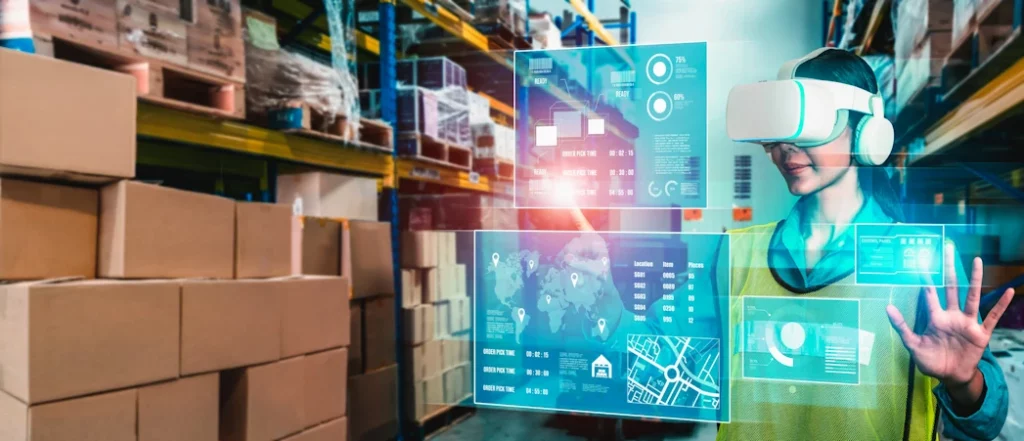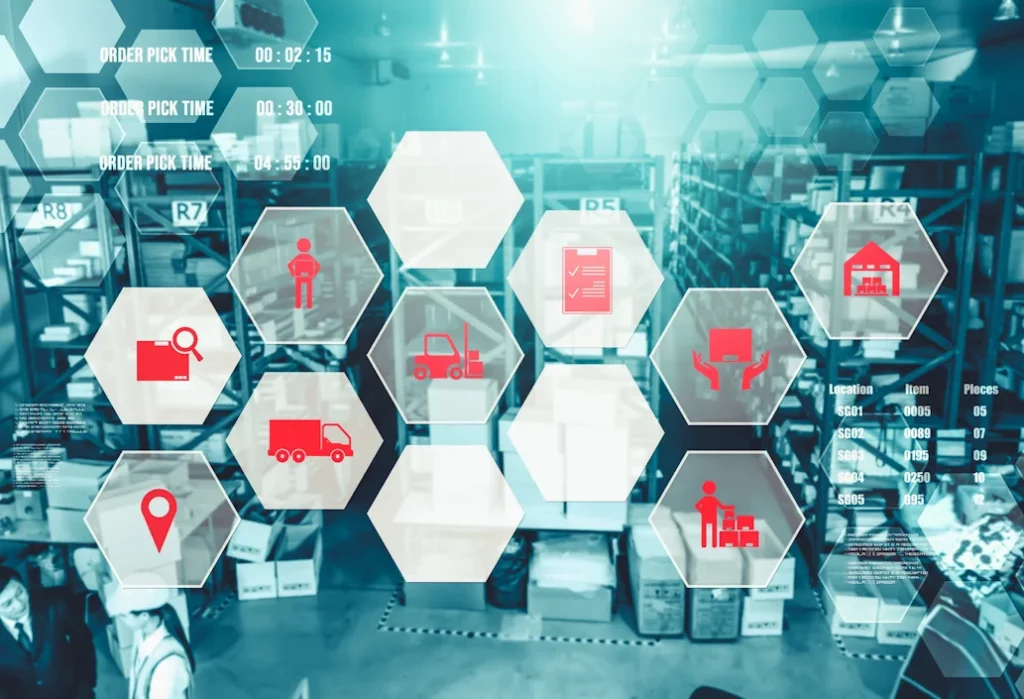The Role of IoT in Modern Transportation and Business Logistics

The Internet of Things (IoT) plays a vital role in optimizing logistics business processes, reducing operational costs, minimizing human error, and enhancing customer service quality. In this article, we explore what IoT is and how it is applied in the field of transportation. The content is particularly valuable for logistics professionals, industry specialists, and business owners seeking to integrate IoT solutions into their operations. We highlight the key devices used to manage logistics processes, demonstrate how IoT contributes to cost reduction and efficiency, and address the potential challenges businesses may face during implementation.
Table of Contents:
- What is IoT and why is it gaining traction?
- How did IoT emerge and what opportunities does it create?
- IoT in business logistics: key benefits and applications
- Types of IoT devices used in logistics
- How IoT reduces costs and improves efficiency
- How to integrate IoT into logistics operations
- How SYNEX Logistics uses IoT to enhance transportation efficiency
- SYNEX Logistics – your partner in cost-effective and optimized business logistics
- Conclusions
What Is IoT and Why Is It Gaining Traction?
The Internet of Things (IoT) is a technology that connects physical devices into a unified network, allowing them to automatically exchange data. Thanks to built-in sensors, software, and communication modules, these devices can collect, analyze, and transmit information in real time—introducing unprecedented visibility, automation, and control to logistics operations.
Driven by global logistics trends, IoT continues to gain traction in the industry thanks to several key factors:
- The decreasing cost of sensors, wireless modules, and cloud platforms makes IoT adoption more accessible to companies of all sizes;
- The rollout of 5G networks supports ultra-fast data transmission with minimal latency;
- A growing demand for automation and operational efficiency drives businesses to seek intelligent, scalable solutions.
How Did IoT Emerge and What Opportunities Does It Create?
One of the earliest IoT prototypes was a Coca-Cola vending machine installed at Carnegie Mellon University in 1982. Equipped with sensors, it allowed users to remotely monitor stock levels and temperature—laying the groundwork for smart monitoring. The term “Internet of Things” itself was coined in 1999 by Kevin Ashton, who proposed using RFID tags to streamline logistics for Procter & Gamble.
In the early 2000s, the first smart devices began to appear—fitness trackers, smart lights, electronic door locks—as well as large-scale innovations like smart cities and autonomous vehicles. Today, the Internet of Things has evolved into an extensive ecosystem of interconnected devices designed to automate processes and boost operational efficiency across sectors. In urban infrastructure, IoT helps optimize street lighting, prevent accidents, and reduce traffic congestion. Smart parking systems allow drivers to quickly locate available spaces, easing pressure on city centers. Within transportation logistics, IoT enables real-time tracking of both shipments and transport conditions, enhancing supply chain visibility and reliability. In the security sector, IoT devices support 24/7 building monitoring and provide early alerts about potential threats. In the hospitality industry, smart sensors automatically adjust lighting and room temperature, enhancing guest comfort. And in agriculture, IoT monitors soil conditions, humidity, and temperature—optimizing irrigation and improving crop yields.
IoT in Business Logistics: Key Benefits and Applications
The application of IoT in logistics unlocks a wide range of advantages for businesses:
- Enhanced safety through continuous monitoring of vehicle conditions, enabling predictive maintenance, and reducing breakdowns or accidents;
- Fleet management efficiency via telematics and smart sensors that monitor routes, vehicle speed, and cargo loads while also detecting and preventing unauthorized stops;
- Condition monitoring during transportation, providing real-time data on cargo status—temperature, humidity, and more—ensuring optimal conditions for sensitive goods like pharmaceuticals and perishables;
- Warehouse integration powered by IoT enables automation, improves maintenance forecasting, and enhances inventory control;
- Improved customer service through accurate, real-time delivery updates and enhanced shipment visibility.

Types of IoT Devices Used in Logistics
IoT-driven logistics operations rely on a variety of smart devices, including:
- GPS trackers monitor vehicle and cargo locations, aiding in route optimization.
- Temperature and humidity sensors ensure cargo is transported under proper storage conditions.
- Intelligent weighing systems measure cargo weight to optimize load balancing and compliance.
- Video surveillance systems with analytics ensure cargo security.
- Smart containers detect geolocation, temperature, fill levels, and potential damage.
- Equipment Health Monitoring Systems enable predictive maintenance by identifying wear and tear in advance.
- Warehouse Management Systems (WMS) automate inventory tracking, stock replenishment, and warehouse workflows.
- RFID systems streamline stock control and automate loading/unloading operations.
- Fuel level sensors help monitor fuel consumption and optimize routes.
How IoT Reduces Costs and Improves Efficiency
IoT adoption significantly enhances logistics performance—especially during peak season, when supply chains experience increased pressure and demand. By analyzing traffic flows and cargo movements, IoT systems help optimize delivery routes, reduce CO₂ emissions, and cut fuel and operating costs. Fuel level sensors detect leaks and prevent unauthorized fuel usage, while RFID tags and smart sensors accelerate inventory audits and reduce shrinkage. Automated inventory management systems ensure accurate stock control and streamline order fulfillment processes.
In parallel, equipment monitoring and predictive maintenance minimize breakdowns and lower repair expenses. Energy management systems in warehouses help regulate power consumption, and container load analytics improve cargo space utilization while reducing logistics waste. By automating data collection and leveraging predictive analytics, companies can reduce manual work, improve planning accuracy, and forecast procurement and production needs more effectively. Together, these IoT-enabled tools not only reduce costs, but also increase operational transparency, responsiveness, and overall business efficiency.
How to Integrate IoT into Logistics Operations
Implementing IoT successfully in logistics begins with setting clear, outcome-oriented goals—whether it’s real-time cargo tracking, monitoring transport conditions, optimizing delivery routes, or enhancing inventory management. Once objectives are defined, the next step is to select the right technologies, such as RFID tags, GPS trackers, and telematics solutions, and integrate them into existing systems like WMS (Warehouse Management System) or TMS (Transportation Management System) to enable seamless automation. Staff must also be properly trained to operate IoT tools and interpret data insights effectively. After deployment, continuous system monitoring and data analysis are essential to identify inefficiencies, refine processes, and respond to shifting market demands.
Key Steps for Integrating IoT into Business Logistics
To successfully integrate IoT into logistics, it is important to follow several key steps:
- Pilot Projects. Start small by testing IoT technologies in a controlled environment to evaluate their effectiveness and detect any potential issues before full-scale deployment.
- Technology Partnerships. Collaborate with experienced technology providers who understand your industry. Prioritize solutions that are scalable and adaptable to your business growth.
- Modular System Investments. Choose modular IoT platforms that offer flexibility and easy integration with your existing IT infrastructure, ensuring smooth cross-system functionality.
- Clear Implementation Strategy. Define your goals, expected outcomes, and measurable key performance indicators to measure success.
- Data Security Measures. Implement strong cybersecurity protocols to protect sensitive operational data, ensuring confidentiality.
Challenges and Limitations of IoT in the Transportation Sector
While the Internet of Things greatly enhances resource management and operational efficiency in transportation, its implementation is not without obstacles. The primary concern is data security. IoT devices can be vulnerable to cyberattacks, posing risks to both transport safety and the confidentiality of employee personal data. Interoperability is another challenge—differing IoT standards and protocols across countries complicate the integration of devices from multiple vendors.

High implementation and maintenance costs, limited connectivity infrastructure in some regions, and the need for powerful servers and skilled personnel further limit IoT accessibility. The high energy consumption of many IoT devices also poses significant limitations for vehicles operating in remote or energy-constrained environments. Furthermore, centralized process control requires complex and expensive management systems.
Despite these limitations, the benefits of IoT are undeniable. Overcoming these challenges is crucial for the effective implementation of IoT in the transportation sector.
How SYNEX Logistics Uses IoT to Enhance Transportation Efficiency
At SYNEX Logistics, we harness advanced technologies to improve the speed, visibility, and safety of freight transportation. GPS trackers and container tracking systems provide real-time location data for vehicles and shipments, helping to optimize routes and minimize the risk of cargo loss or damage. We also leverage container monitoring tools and ship scheduling systems to better plan deliveries and ensure reliable, secure transport operations. Our commitment to adopting smart technologies allows us to accelerate logistics workflows while maintaining high service quality for our clients.
SYNEX Logistics — Your Partner in Cost-Effective and Optimized Business Logistics
SYNEX Logistics delivers comprehensive logistics solutions that empower businesses to reduce costs and boost efficiency through innovation. As a third-party logistics (3PL) provider, we offer a full suite of services, including global multimodal transportation, cargo consolidation, customs clearance, and insurance. With a diversified agent portfolio and direct contracts with leading carriers, SYNEX Logistics ensures speed, reliability, and cost savings across all stages of logistics operations. Our scalable approach enables clients to adapt to market demands and maintain a competitive edge.
Contact us today to discover how SYNEX Logistics can streamline your supply chain, reduce costs, and foster sustainable business growth.
Conclusions
The integration of IoT in logistics opens up new opportunities for business transformation — from reducing costs to enhancing customer satisfaction. Real-time monitoring, smart sensors, and automation make supply chains more efficient, accurate, and responsive. Despite integration and security challenges, the strategic implementation of IoT unlocks a new era of logistics innovation and competitive strength for businesses.




